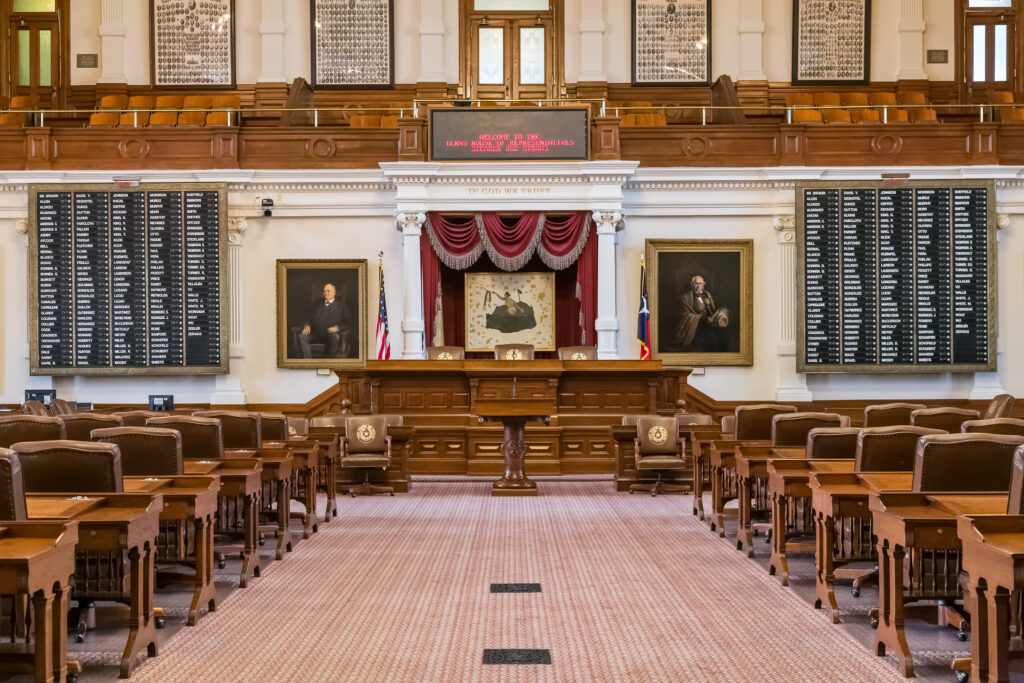Effective September 1, 2023, Texas schools will undergo a transformation in their security measures. House Bill 3 (HB 3) has added a new section, 37.0814, to the Texas Education Code, outlining specific requirements for armed security officers in school districts.
Key Highlights from HB 3
Mandatory Armed Security Officers
Each school board must determine the number of armed security officers for each district campus. At least one armed security officer should be present during regular school hours at each campus unless a good cause exception is invoked.
Good Cause Exception
This can be claimed due to a lack of funding or qualified personnel. If invoked, the board must provide an alternative security standard, which might include a school marshal or an authorized individual who has completed the handgun safety course.
Documentation
Every district must create and maintain documentation showcasing its compliance with this new section.
To provide clarity on HB 3’s implications, we’ve compiled a list of frequently asked questions:
FAQs – HB 3’s Armed Security Officer Requirement
Can districts use alternative security personnel other than commissioned peace officers?
Only if a good cause exception is claimed.
Who is a school district peace officer?
An employee licensed by the Texas Commission of Law Enforcement (TCOLE) and commissioned by the district.
What defines a school resource officer (SRO)?
An SRO is a commissioned peace officer employed by another entity (e.g., county sheriff, city police department) but assigned to a specific school district.
Who qualifies as a commissioned peace officer employed as security personnel?
They can be security personnel employed/contracted by the school, officers provided by local law enforcement agencies, or officers from security services contractors licensed under Texas Occupations Code chapter 1702.
What should MOUs regarding school district security entail?
MOUs should outline communication and coordination efforts between school police departments and other agencies. They must also include a statement of the SROs’ law enforcement duties.
How is a campus defined in terms of officer requirement?
The Texas Education Agency (TEA) will likely provide clarity on this. Alternatively, a school board could seek a good cause exception for campuses in close proximity.
What does “being present” entail for an officer?
If an officer isn’t assigned full-time to the campus, a good cause exception should be sought. Coverage should be provided even when an officer is on leave.
How are “regular school hours” defined?
The term isn’t explicitly defined. If an officer isn’t present during instructional hours, a good cause exception should be pursued.
How does a school board claim a good cause exception?
A board resolution is recommended. Documentation of the exception must be available to TEA upon request.
What can be included in an alternative standard?
Districts can employ armed security guards, school marshals, or guardians, depending on local needs.
What differentiates a school marshal from a guardian?
School marshals undergo formal training and certification by TCOLE. Guardians, on the other hand, complete a shorter school safety training.
How should a board’s alternative standard be documented?
The board must develop and maintain documentation of its compliance, including any good cause exceptions.
How much detail about safety plans should be shared publicly?
While parents and community members have a vested interest in school safety, the specifics of security planning can remain confidential, protected by statutory provisions.
If a district meets the requirements of Section 37.0814 (a), does the board need to take public action?
Yes, a resolution or a vote in an open session is recommended.
What further guidance can we expect from the TxSSC or TEA?
While the TxSSC provides school safety guidance, it doesn’t have specific authority regarding Section 37.0814. TEA will offer guidance on HB 3 on August 24, 2023, followed by webinars in September.
While the bill sets the framework, it’s up to each school district to tailor their approach, considering their unique challenges and needs.
For a deeper dive into HB 3 and its ramifications, refer to the TASB School Law eSource. The Texas School Safety Center (TxSSC) and the Texas Education Agency (TEA) will also be rolling out further guidance and resources soon.
Stay informed with more updates on this pivotal legislation and its impact on Texas schools.
Overview of Texas House Bill 3 – 2023
Purpose and Background
Texas House Bill 3, introduced in the 88th Legislature, aims to enhance public school safety by adopting measures to ensure the presence of armed security officers on every school district campus.
This bill, which is part of a broader school safety push, is a response to incidents of school shootings and violence, ensuring schools in Texas are better equipped to protect their students and staff.
Key Provisions
One key provision of the bill is the requirement for each school district’s board of trustees to determine the number of armed security officers for each district campus.
Additionally, the board must ensure that at least one armed security officer is present during regular school hours at each campus.
These security officers can be school district peace officers, school resource officers, or commissioned peace officers employed as security personnel under Section 37.081.
If a school district’s board of trustees cannot fulfill this requirement due to issues like funding or personnel availability, they may claim a “good cause exception” and develop an alternative plan.
This alternative could involve having a school marshal or a school district employee who has completed necessary school safety training carry a handgun on school premises.
Another key provision is specifying the roles and limitations of persons permitted to carry firearms on school grounds.
Until an emergency situation arises, such individuals cannot perform routine law enforcement duties, like making arrests.
However, this does not apply to commissioned peace officers who have assigned law enforcement duties, as described in their campus and district role documents.
Overall, Texas House Bill 3 aims to provide a safer environment within the education system by mandating armed security officers in schools, thus addressing concerns stemming from incidents of violence in the past.
Armed Security Officer Requirements
Qualifications for Security Officers
The armed security officer appointed by the school district’s board of trustees must meet one of the following qualifications:
- Be a school district peace officer
- Be a school resource officer
- Be a commissioned peace officer employed as security personnel under Section 37.081 of the Education Code.
Good Cause Exception
If a school district’s board of trustees is unable to comply with the armed security officer requirements due to factors like funding or personnel availability, they may claim a “good cause exception” to this requirement.
In this case, the board must develop an alternative standard for security officers, which could include:
- Appointing a school marshal
- Employing a school district employee or a contracted person who:
- Has completed school safety training provided by a qualified handgun instructor certified in school safety.
- Carries a firearm on school premises in accordance with written regulations or written authorization of the district under Section 46.03(a)(1)(A) of the Penal Code.
The board is responsible for documenting the district’s implementation and compliance with these requirements, including any claims related to a good cause exception, and must provide this documentation if requested by the agency.
Alternative Security Measures
School Marshal Option
In cases where a school district is unable to comply with the requirement of having an armed security officer on campus due to funding or personnel availability, the board of trustees may consider alternative security measures.
One such option is appointing a school marshal, as outlined in Texas House Bill 3 – 2023’s Section 37.0814.
A school marshal can be a school district employee who takes on the security officer role and carries a firearm on school premises.
School Safety Training
Another alternative security measure includes providing school safety training for a school district employee or a person with whom the district contracts.
This individual must have completed school safety training provided by a qualified handgun instructor certified in school safety under Section 411.1901, Government Code.
Additionally, the employee must carry a handgun on school premises in accordance with written regulations or written authorization of the district under Section 46.03(a)(1)(A), Penal Code.
This provision in Texas House Bill 3 aims to ensure that schools can maintain a secure environment even if they’re unable to comply with the armed security officer requirement.
It’s worth noting that the education code also stipulates limitations on the roles of those carrying firearms.
According to Section 37.089, individuals with firearms on school grounds may not perform routine law enforcement duties of a peace officer, such as making arrests, unless responding to an emergency that poses a threat of death or serious bodily injury.
In conclusion, Texas House Bill 3 offers alternative measures for school districts that cannot meet the armed security officer requirement.
By considering options such as school marshals and safety training for staff, schools can still maintain a secure environment for their students and employees.
Documentation and Compliance
Maintaining Records
Under Texas House Bill 3 school districts are required to develop and maintain documentation of their implementation and compliance with Section 37.0814.
This includes keeping records related to any good cause exception claimed under Subsection (c) due to the lack of funding or qualified personnel to serve as armed security officers.
Districts must also maintain records of alternative standards they are able to comply with, such as employing school marshals or trained individuals who can carry a handgun on school premises.
Agency Requests
Furthermore, the school district’s board of trustees must provide the necessary documentation to the Texas Education Agency upon request, in a manner prescribed by the agency.
This documentation covers the district’s compliance, ensuring that appropriate security measures are in place to protect students, staff, and other individuals on school premises.
In the context of documentation and compliance, it is relevant to mention the Education Code – a comprehensive set of laws and regulations governing Texas schools.
The Education Code provides the necessary framework for school districts to operate within, while adhering to the specific requirements set forth in Texas House Bill 3.
Roles of Persons Carrying Firearms on School Grounds
Restrictions on Law Enforcement Duties
According to the Texas House Bill 3, individuals permitted to carry firearms on school campuses should not perform the routine law enforcement duties of a peace officer, such as making arrests.
These limitations are enforced unless the individual is responding to an emergency that poses a threat of death or serious bodily injury to a student, school district employee, or any person on the campus.
Exceptions for Commissioned Peace Officers
The restrictions mentioned above do not apply to commissioned peace officers who are assigned law enforcement duties included in the campus and district documents describing the role of peace officers in the district as required by Section 37.081(d).
These commissioned officers are authorized to carry out law enforcement duties in school districts as prescribed in the corresponding documents, ensuring the safety of students, staff, and other individuals within school premises.
In conclusion, Texas House Bill 3 establishes guidelines for the roles of individuals carrying firearms on school grounds and sets limitations on their law enforcement duties while ensuring the safety of students and staff on campus.
Exceptions are made for commissioned peace officers, who are responsible for adhering to their assigned duties based on campus and district guidelines.
Legislative Actions and Updates

Public Hearing and Senate Involvement
During the legislative process of Texas House Bill 3 in 2023, it underwent a public hearing which allowed the public in Texas to express their thoughts and opinions on the bill.
The Senate took part in discussing the bill, analyzing its impacts on Texas schools, and considering any potential amendments.
The involvement of the Senate was crucial in refining the bill and addressing concerns raised during the public hearing.
Conference Committee Report
Following the public hearing and Senate involvement, a Conference Committee was formed to reconcile any differences between the versions of the bill passed by the House and Senate.
This committee was responsible for addressing the concerns and suggestions of both the House and Senate and creating a unified version of the bill to submit for final approval.
By collaborating on these sections, the Conference Committee Report ultimately ensured that the final version of Texas House Bill 3 in 2023 was clear, comprehensive, and in the best interest of school safety and security in the State of Texas.
Frequently Asked Questions
How many armed officers are needed?
Each school district’s board of trustees is responsible for determining the appropriate number of armed security officers for each campus.
They must ensure that at least one armed security officer is present during regular school hours at each district campus.
Who can be a security officer?
A security officer must be either:
- A school district peace officer;
- A school resource officer; or
- A commissioned peace officer employed as security personnel under Section 37.081.
What is a good cause exception?
A good cause exception can be claimed by a school district’s board of trustees if they are unable to comply with the requirement to have an armed security officer due to the availability of funding or personnel who qualify to serve as a security officer.
What are alternative security options?
If a good cause exception is claimed, the board of trustees must develop an alternative standard which may include providing a person to act as a security officer who is:
- A school marshal; or
- A school district employee or a person with whom the district contracts who has completed school safety training and is allowed to carry a handgun on school premises.
What documentation is required?
The board of trustees must develop and maintain documentation of the district’s implementation of and compliance with this section, including documentation related to a good cause exception.
If requested by the agency, this documentation must be provided in the manner prescribed by the agency.
When can a firearm be used?
A person permitted to carry a firearm on the campus of a school district may not perform routine law enforcement duties, including making arrests, unless the duty is performed in response to an emergency that poses a threat of death or serious bodily injury to a student, school district employee, or other individual at the campus. However, this restriction does not apply to commissioned peace officers with assigned law enforcement duties as described by Section 37.081(d).
Conclusion
Texas House Bill 3 addresses the important issue of school safety by mandating the presence of armed security officers on school campuses.
According to the bill, the board of trustees of each school district is responsible for determining the appropriate number of armed security officers and ensuring at least one is present during regular school hours at each campus.
These officers must be school district peace officers, school resource officers, or commissioned peace officers employed as security personnel.
If a school district is unable to comply with these requirements due to issues such as funding or availability of qualified personnel, it may claim a good cause exception and develop an alternative standard.
This alternative may include employing a school marshal or a school district employee who has completed relevant school safety training and carries a handgun on the school premises in compliance with district regulations.
In addition, Section 37.089 outlines the role of people carrying firearms on school grounds, stating that they should not perform routine law enforcement duties unless responding to an emergency that poses a significant threat.
This restriction does not apply to commissioned peace officers who have assigned law enforcement duties specified within campus and district documents.
Legal Disclaimer
This article discusses the proposed Texas House Bill 3 – 2023, which focuses on armed security officers required at each school district campus. This information is meant for informational purposes only and may not cover every aspect of the bill or accurately convey the full legal nature of the bill in all circumstances. Please note that the information provided in this article is not legal advice and should not be relied upon as such. Consult with a professional legal expert or seek specific guidance from your local education authority for a more comprehensive understanding of Texas House Bill 3 and its implications for your school district.








